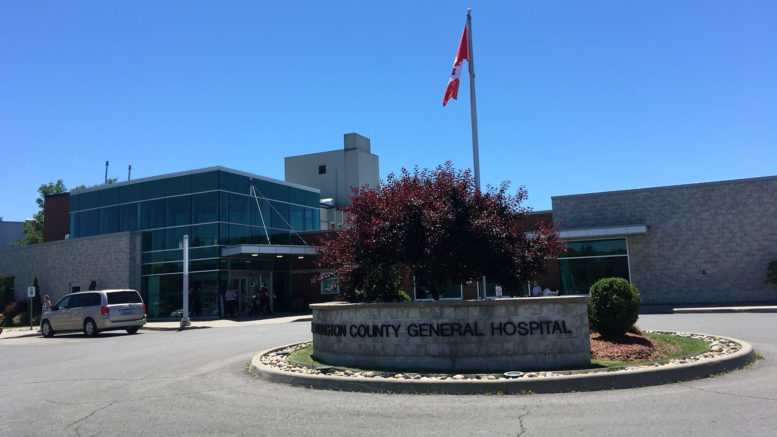Adam Prudhomme
Beaver Staff
Lennox and Addington County General Hospital is using a very different kind of tablet to treat patients —not a pill but rather an electronic device.
Known as the Breathe Easy Program, it sees patients given a tablet device that allows them to connect with doctors from the comfort of their own home. LACGH is the first hospital in the region to implement the program, and hospitals across the country are taking notice.
Right now the program is focused mainly on chronic obstructive pulmonary disease (COPD) patients who are recognized as severe inpatients. Rather than asking patients to make several trips to the hospital for follow up visits, a patient can take home a customized tablet that allows them to have a virtual face-to-face chat with their doctor to monitor their progress.
“We want to make sure they have more support going home,” said Annette Stuart, respiratory service manager at LACGH. “There were supports in place through home care and so forth, but a lot of patients were coming back to emergency and the more a patient comes back into emergency and is admitted into the hospital with COPD, the more at risk they are for further failure. They lose the ability to move, they lose ability to function at home by themselves.”
Since it was launched in November, the Breathe Easy Program has already helped more COPD patients stay in their homes. Prior to the program, a COPD patient would receive a visit from a nurse two days following discharge from the hospital and would then have a follow-up visit with a family physician one week later. They’d then be checked four weeks after that. By providing them with a take-home tablet, they’re able to fill in the gaps between those visits.
“Part of the Breathe Program for these patients with COPD is to give them that support and we reach out to them virtually,” said Stuart. “We give them a tablet to take home and then I can connect to them similar to Skype and FaceTime. They can record and upload their information, blood pressure, oxygen levels, their weight, they can record their symptoms and I can monitor the symptoms while they’re at home and see if they’re doing better, the same or worse.”
Patients can also call during office hours or send a text to Stuart if they are unsure of about one of the readings. The instant access allows for Stuart to intervene sooner is a patient’s condition is worsening, which can lead to better outcomes. The purpose of the program isn’t to replace the old healthcare network, but rather to enhance it.
“The tablet also has an app that can be downloaded by family members,” explains Marie-France Paradis, manager of allied health services and clinical informatics with LACGH, noting that patients are required to give their consent before their information is linked to their tablet. “If they decide my son or daughter would like to be part of their care but they live in New Brunswick and they would have to (travel to Napanee), they can download it on their iPhone and they can see how their parents are doing.”
They can also connect with their family member’s physician and raise concerns that they’ve noticed.
“They often come (to the hospital) once they are very sick,” said Paradis. “Instead now they can touch base with Annette and address the problem before it becomes a huge problem.”
That access to health care is particularly important to some of the elderly residents who live in the more rural areas of L&A County.
“A visit that never would have happened before because the patient can’t physically leave the house because they’re too short of breath is now getting that support,” added Stuart.
The software is easy enough to use that even seniors with little experience with technical devices are having no issues with it. To keep it easy, the hospital only uses Samsung devices, so they can easily troubleshoot any problems with their IT staff. It’s also all encrypted, so only those with proper access can see the information. The tablets also come with no cost to the patients.
It’s also saving time and resources for health care providers. Stuart says since it was launched in November, they’ve allowed nine COPD patients to recover from the comfort of their home, which in turn has kept them out of hospital beds. With just 24 beds available at the hospital, that’s 40 per cent of beds that would otherwise have been occupied by COPD patients.
“It’s a huge success so far and it’s only been seven months,” said Stuart. “If we can move on and move forward with it, expand it even, who knows what the positive results are.”
They’ve already presented the program at a conference in Vancouver and Kingston, while also fielding phone calls from places such as Toronto’s Sick Kids Hospital, all curious about adapting a similar program into their hospitals.
Stuart says the technology could be expanded beyond COPD and diabetes care and tablets could be given to patients in Hospice care who need someone to talk to, mental health patients, diabetes patients and those who have concerns relating to diet and exercise.
“We’re a community hospital but we’re a mighty hospital,” Stuart says of Napanee leading the charge on the new technology. “We’re very forward thinking, very much community minded.”

